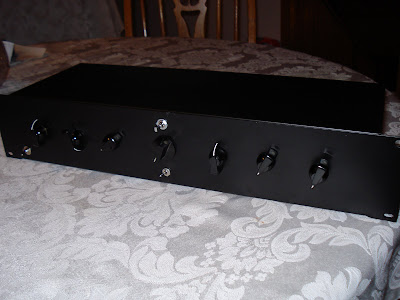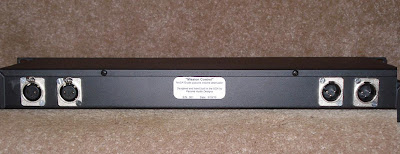


My passive equalizer is finished! Its basically the filter section of a Pultec. Unlike a Pultec, there is no op amp for makeup gain. Instead, a preamp is required to compensate for insertion loss. This is pretty cool if you have a few different preamps laying around, as you can change the tone of the eq by selecting a different pre.
The eq is very natural sounding and very transparent. It has a slightly vintage/liquidy tone to it. Only NOS paper in oil capacitors were used throughout, as well as a Jensen input transformer and my home-made pultec inductor. I wanted to stick pretty close to the original pultec filter schematics. The only major difference is mine has 6 selectable frequencies for the high boost section, as the original had 7 frequencies.
I designed my own inductor around the original pultec, matching up the taps/frequencies (mH) to within less than 5% tolerance of the original. In the middle picture, its the square transformer-like thing at the bottom left. The giant metal thing in the center is actually just a capacitor that's being used for the low frequency filter. even though its a 14,000V cap, it still works perfectly in a 1V environment. I used it because it was the only paper in oil cap I had laying around that had the correct farads. If anything, it sounds slightly better than the rest of the caps lol.
Anyway, it sounds amazing! It really makes music come to life. IMHO, words can not describe what this does for audio. it takes mixing to a whole new level.
build cost was under $300, as I had most of the parts laying around and built my own inductor.














